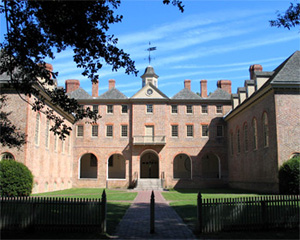The College of William and Mary has the least socioeconomic diversity of any public university in the nation, at least based on the proportion of students who qualify for Pell Grants. Only 12 percent of those enrolled at the College receive Pell money, a form of need-based federal aid generally available to students from households that make under $50,000 per year.
This statistic isn’t the only possible measure, but it does help track the number of low income students. The school’s poor showing suggests we need to do more to build a culture welcoming to lower income students. Few low-income students are attending, which, in turn, discourages students of comparable backgrounds from applying to or choosing the College. Some of those who do attend are implicitly made to feel unwelcome on campus or even undeserving of the chance to attend college. Diversity isn’t a theoretical problem; it is a personal one. When such a tiny slice of the student body comes from similar socioeconomic circumstances it becomes harder for a student to feel a sense of belonging.
As a public institution, the school has to make sure it remains accessible to people of every background.
The College has made progress in recent years. In 2008, only 8 percent of students received federal assistance. From 2012 to 2014, that number was up to 10 percent. Now it’s up another two points. But it is evident that the College still has to make vast improvements. “Worst in the nation” is a significant label, no matter the metric. As a public institution, the school has to make sure it remains accessible to people of every background. The health of the school — and of its students — depends on it.
The numbers become even more telling when broken down by in-state vs. out-of-state status. While 15 percent of Virginia residents are Pell Grant recipients, only 6 percent of out-of-state students meet the same criteria. In a crude way, this makes sense. In-state students, who make up 64 percent of the class of 2018, pay about $12,000 per year in tuition, whereas out-of-state students — the remaining 36 percent — pay $35,000 per year. That is to say, the College makes a lot more money off of out-of-staters than it does from Virginia residents. In April 2013 this board said the school’s policies discouraged middle class students from outside VA. Sadly, the same seems true today.
This isn’t necessarily an indictment of the admission policy. The school has a set of financial needs to address. But with in-state tuition slated to increase to over $15,000 for the incoming class of 2020, the administration has to keep accessibility in focus.
Pell Grant qualifications is only one way to measure socioeconomic diversity. The College offers its own need-based financial aid, which typically applies to students above the $50,000 threshold. Lower-income students also get aid from the College, though they make up a relatively small segment of that demographic. 35 percent of undergraduates receive need-based assistance, but from that group only 32 percent also receive Pell Grant aid.
The College needs real and immediate action. This means making the College more readily available to low and middle-income students from outside of Virginia and from within it.
Rectifying this imbalance will take not only funding, but also a significant shift in priorities. At least on the face of it, the College is moving toward more diversity. One of the aims of the For the Bold campaign is to expand the proportion of lower-income students, including Pell Grant recipients. But those changes are not immediately implementable. The College needs real and immediate action. This means making the College more readily available to low and middle-income students from outside of Virginia and from within it. It means placing human concerns over economic ones. The College likes to make diversity a selling point; it’s time to deliver.
The staff editorial represents the opinion of The Flat Hat. The editorial board, which is elected by The Flat Hat’s section editors and executive staff, consists of Emily Chaumont, Tucker Higgins, Isabel Larroca, Miguel Locsin, Quinn Monette, and Kayla Sharpe. The Flat Hat welcomes submissions to the Opinions section. Limit letters to 250 words and columns to 650 words. Letters, columns, graphics and cartoons reflect the view of the author only. Email submissions to fhopinions@gmail.com.


I think that problem is deeper rooted than this article suggests. William & Mary is a highly competitive school to get into. Unfortunately, the public schools where many low income students receive their education are sub-par creating an achievement gap between those students and their average SES peers. Low SES students are less likely to go to college than their higher SES peers and this gap increases as you begin to look at top caliber universities. Less competitive universities would be more likely to have low SES students than universities like W&M. I agree that W&M should try to do what they can to combat this from their end, but I also think a lot of the responsibility falls on the public school systems where lower SES students are getting an education. Specifically, I lament that the schools with the neediest student populations are often severely underfunded.